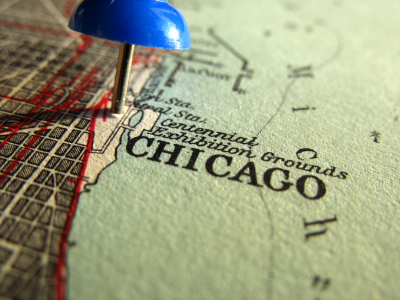
Building a context in which to write is dull work, yet it's the only work available to poets now. We've been watching--we poets are the last ones watching-- epistemology and ideology bat one another in a bloodless Punch and Judy show that reveals and inspires nothing equally. Poetry moves fast because it has no one to account to; if we as poets decide to erase history and replace it with radical epistemology we do it, boom, and the generations of poetry flash by with all the undifferentiated movement of a strobelight. If we continue on, no one will notice. If we pull back, no one will notice. Neither capital nor human solidarity nor the beasts of the field. So perhaps what is interesting about poets to the outsider, if it is interesting (and I am becoming more like an outsider to poetry every day) is in the way we flail around. After all, jobs are starting to look a lot more like poetic post-experimentalism every day, the product of libertarian dreaminess and anxiety.
What I'm saying is; poets lack context. It's hard to review.
Now, if geography as a theme could replace the specific context poetry has lost everyone would be doing it. It's been done often enough, though; it's a great context to borrow. Geography has a staid meaning; and, bonus, its boundaries become supple and weird upon inquiry (read Names On the Land from George Stewart to find out how). This is what a lot people think poetry is, or want it to be. Alas, maps do geography better than poetry. What geography lends us instead is a distorted mirror that's fun to look at but unhealthy to depend on.
With this caveat that I introduce, briefly, two new books of poetry. They are both from Ugly Duckling Press; they are Kevin Vallone's g-point almanac: passyunk lost and Rick Snyder's Escape from Combray. Their combination of poetry and geography are both worthwhile: better, I think they are both playfully done.
I nearly passed on Escape From Combray for the same reason that I passed on Proust Was A Neuroscientist. Yet it had a cover that looked a lot like the early, slim edition of The Maximus Poems from The Figures press. Except in this case the map was not of Glouchester (nor, thankfully, of Combray) but Chicago, a place I spent nearly a decade of my life. If this were a novel, I'd say he captures well both the gray, cozy eternity of its winters and the sterilizing creep of its commerce ("Gold Sounds" begins, "Having become/ the type of person/ who will walk/ to the Shell station/ on a Friday night/ to buy a KitKat"). This is a book of poetry -- a very comfortable, very nice book of poetry, refreshing mainly because the stuff around it is so sharp and niggardly-- that does much of the work that a novel or a short story does. This is not a bad thing, especially since few novelists I know this side of Aleksandar Hemon have have captured as Snyder has what it feels like to actually live in Chicago rather than go on bogus adventures there. This is a book of poetry in which the author goes out and does stuff. The reason "I do this, I do that" was so interesting when Frank O'Hara did it was that he lived at a time when middle-class, intelligent Americans could live interesting lives and write interesting poems without getting blown up by airplanes or mortar fire. Rick Snyder seems to know this but tries it out anyway, with all the requisite KitKats--and passive observation-- that approach implies. This is mostly a guy watching his city change, not someone changing his city. Still, a pastoral that begins "Somewhere between the wine and the nightmare/ my ex-girlfriend's cat/ comes to work with me" has a lot of charm, and charm is good for something.
Keven Varrone's book is the third of a tetrology; I haven't read the first two parts, though I've seen his work around. It's of interest to me because I've been spending time in Philly lately (Passyunk is a town outlying Philadelphia) and talking to some Philly poets in preparation for our upcoming event. I do not know Philly well. Having said that, I do not recognize Philly in these poems--streets are just streets and go unnamed, coal is burned here and there, gulls are displaced, "inland." It could be Gary, Indiana or someplace in West Virginia. Varrone definitely drinks from the postexperimental fountain, and so vague things float by on puffs of the author's intelligence and words go unmoored on the page (and, really, no caps? A la e.e. cummings? Why?). Still, there is too much here to like to pass it up. This is less a meditation on place then on time; in the long, continuing sequence, poems are numbered by season and date and have the literalness of a day captured half at work and half at rest, as most days are. "among the laterals, amazing upward structures" begins one of the poems for some unannuated January 11th. It is not only literally describing a spreadsheet, but has a similar cadence. A week later, "the birds made a dappled panic on the bocce court." Which strikes me a much livelier and in debt to Hopkins, which one never sees.
Buy these books and see for yourself.
Poetry in its places Wednesday, February 3, 2010
Posted by Greg Purcell at 8:43 AM
Subscribe to:
Post Comments (Atom)


0 comments:
Post a Comment